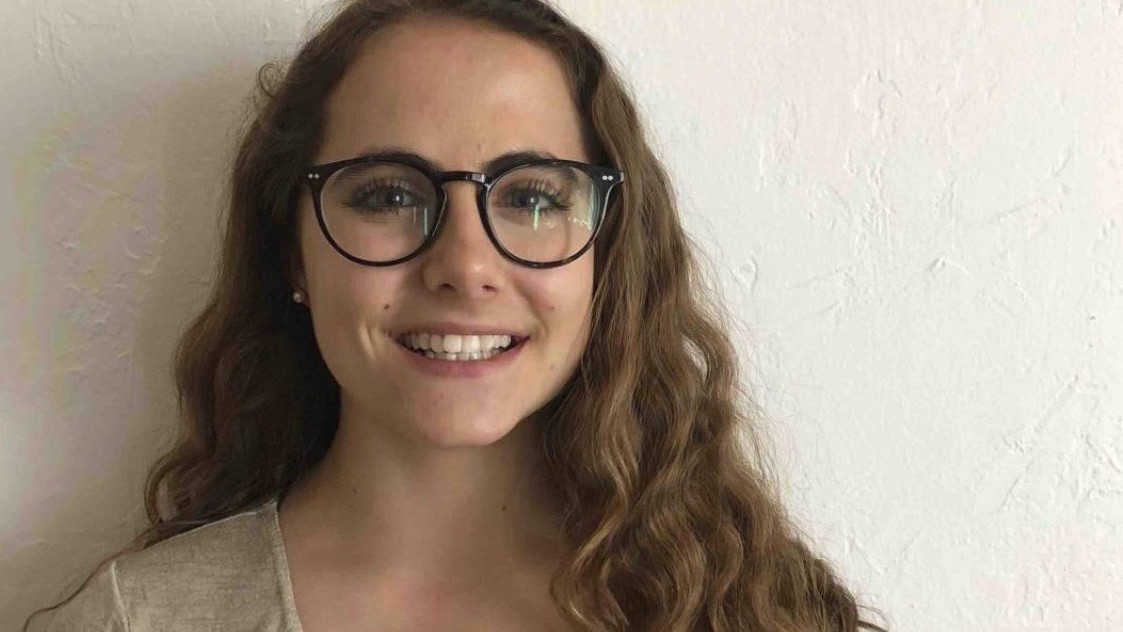Open Meetings: How the Brown Act Works

What You Need to Know About Open School Board Meetings
School boards make important decisions that affect students, families, educators, and entire communities.
In This Post
What is the Brown Act, and why does it matter?
Who has to follow the Brown Act?
What counts as a meeting?
What kinds of meetings are allowed?
Where can meetings happen?
How did the pandemic change the rules?
What are 'serial meetings'?
Do charter schools have different rules?
What does it mean to 'notice' a meeting?
Who gets to see the documents?
What is a closed session?
How can the public participate?
Do school boards have to publish minutes?
What about school site councils and parent committees?
If you want to influence those decisions — or even just understand how they are made — it helps to know the rules. In California, those rules are largely shaped by the Brown Act, a law that ensures meetings are conducted in public, with advance notice and opportunities for participation. This post explains how it works, how it has evolved, and how you can make your voice heard.
The Brown Act: History and Why It’s Important
The Brown Act, or Open Meeting Law, is designed to ensure that public meetings are open and transparent. It enables the public to know when and where meetings will be held, what will be discussed, and how to participate. The Brown Act was adopted in 1964 and overhauled in 1993. The California Legislature continues to update it — especially in response to technological change and emergencies like the pandemic.
Who Has to Follow the Brown Act?
The Brown Act applies to all legislative bodies, including city councils, county boards of supervisors, school boards, county boards of education, and charter school boards. It also applies to subcommittees and commissions created by those bodies.
Ad hoc advisory committees made up of fewer than a quorum of members are exempt. (Need to brush up on rules like the meaning of a quorum? The League of California Cities has concise explanations.)
If you’ve just been elected to a school board, congratulations! You are now subject to the Brown Act, even before you’re sworn in.
What Counts as a Meeting?
Under the Brown Act, a meeting occurs whenever a majority of voting members gather — physically or virtually — to “hear, discuss, deliberate, or take action” on a matter within the board’s authority.

In the Ed100 blog
Learn more about student board members
For a five-member board, three members constitute a meeting. For a seven-member board, it’s four. This definition includes meetings via audio or video as long as all legal requirements are met, including public notice and opportunity for public comment. Votes must be taken by roll call.
What Kinds of Meetings Are Allowed?
There are three main types of meetings: regular, special, and emergency. Each has different requirements for notice and agenda posting.
Three Types of Meetings | |
|---|---|
Regular |
Scheduled throughout the school year, regular meetings follow an annual calendar and cover standard board business. |
Special |
Special meetings may be called by the board president or a majority of members with 24 hours’ notice. Some topics, like high-level employee compensation, are excluded. |
Emergency |
Emergency meetings address urgent situations like disasters. Even then, notice must be given to media and documents posted for public access. |
Where Can Meetings Happen?
Under the Brown Act, public school board meetings must take place at a physical location that is accessible to the public and located within the boundaries of the school district. This long-standing requirement ensures that public business is conducted in the community it serves. There are limited exceptions for things like emergency conditions, site inspections, or superintendent interviews, but they are rare.
During the COVID-19 pandemic, emergency orders allowed school boards to meet entirely online. That flexibility ended with the expiration of those orders. In response, the Legislature passed AB 2449, which allows individual board members to participate remotely under strict conditions, such as illness or family emergencies. However, a quorum of the board must still be physically present in the district at a publicly accessible location, and the public must always have the option to attend in person. Remote access for the public is encouraged but does not replace the in-person requirement.
Charter school boards follow similar rules. Meetings must generally take place in the county where the school operates or where most students reside. As of January 2020, SB 126 requires charter schools to comply with the Brown Act and provide public access. The law also calls for two-way teleconferencing systems to support participation — but these tools supplement, rather than replace, the requirement for a physical meeting location.
What Are "Serial Meetings"?
Oops, this conversation just became a meeting!
Board members must avoid accidentally conducting meetings through backchannel communications like emails or social media threads. These so-called serial meetings are violations of the Brown Act. Even attending a social event together can create risk if business is discussed.
Do Charter Schools Have Different Rules?
Not significantly. Since 2020, charter schools must comply with the Brown Act, thanks to SB 126. A few charter schools in the past were directly authorized by the State Board of Education. In those rare cases, their governing boards must follow the Bagley-Keene Open Meeting Act, which applies to state boards and commissions. However, nearly all charter school boards in California are now authorized locally and follow the Brown Act.
What Does It Mean to Notice a Meeting?
The board may only discuss and act upon what is on the written agenda.
All regular meetings must be publicly noticed at least 72 hours in advance. The notice must include time, location, and agenda — and it must be posted on the district’s website. Each agenda item must be clearly described so the public can understand and comment meaningfully.
Who Gets to See the Documents?
Any materials shared with a majority of board members must also be shared with the public. This requirement applies to charter schools as well, under SB 126. The League of California Cities offers a good reference.
What Is a Closed Session?
Boards can hold closed sessions for sensitive matters like litigation, labor negotiations, personnel actions, student discipline, or real estate negotiations. Even these require advance notice and an agenda. Any action taken must be reported publicly afterward.
How Can the Public Participate?
The public has the right to comment on any agenda item and on other matters within the board’s jurisdiction. Boards can set reasonable time limits — and must double the time for translated comments. Some boards use speaker lotteries or online signups to manage participation.
Do School Boards Have to Publish Minutes?
The Brown Act does not require minutes — but Education Code 35145 does. Boards must record decisions, and charter schools must also record and post audio or video of meetings online.
What About Schoolsite Councils and Parent Committees?
The Greene Act governs open meetings for some parent committees, such as school site councils and English Learner Advisory Committees. It’s modeled after the Brown Act but is simpler to encourage participation. These meetings require 72-hour notice and public comment, but there’s no “closed session” and parents may discuss business between meetings.
What about PTA boards? PTAs are not legislative bodies and aren’t governed by the Brown or Greene Acts — but check your bylaws! They might still include rules that limit virtual meetings and may need an update.
Updated July 2025.
Tags on this post
Brown Act Civics Districts Policy School board PandemicAll Tags
A-G requirements Absences Accountability Accreditation Achievement gap Administrators After school Algebra API Arts Assessment At-risk students Attendance Beacon links Bilingual education Bonds Brain Brown Act Budgets Bullying Burbank Business Career Carol Dweck Categorical funds Catholic schools Certification CHAMP Change Character Education Chart Charter schools Civics Class size CMOs Collective bargaining College Common core Community schools Contest Continuous Improvement Cost of education Counselors Creativity Crossword CSBA CTA Dashboard Data Dialogue District boundaries Districts Diversity Drawing DREAM Act Dyslexia EACH Early childhood Economic growth EdPrezi EdSource EdTech Education foundations Effort Election English learners Equity ESSA Ethnic studies Ethnic studies Evaluation rubric Expanded Learning Facilities Fake News Federal Federal policy Funding Gifted Graduation rates Grit Health Help Wanted History Home schools Homeless students Homework Hours of opportunity Humanities Independence Day Indignation Infrastructure Initiatives International Jargon Khan Academy Kindergarten LCAP LCFF Leaderboard Leadership Learning Litigation Lobbyists Local control Local funding Local governance Lottery Magnet schools Map Math Media Mental Health Mindfulness Mindset Myth Myths NAEP National comparisons NCLB Nutrition Pandemic Parcel taxes Parent Engagement Parent Leader Guide Parents peanut butter Pedagogy Pensions personalized Philanthropy PISA Planning Policy Politics population Poverty Preschool Prezi Private schools Prize Project-based learning Prop 13 Prop 98 Property taxes PTA Purpose of education puzzle Quality Race Rating Schools Reading Recruiting teachers Reform Religious education Religious schools Research Retaining teachers Rigor School board School choice School Climate School Closures Science Serrano vs Priest Sex Ed Site Map Sleep Social-emotional learning Song Special ed Spending SPSA Standards Strike STRS Student motivation Student voice Success Suicide Summer Superintendent Suspensions Talent Teacher pay Teacher shortage Teachers Technology Technology in education Template Test scores Tests Time in school Time on task Trump Undocumented Unions Universal education Vaccination Values Vaping Video Volunteering Volunteers Vote Vouchers Winners Year in ReviewSharing is caring!
Password Reset
Search all lesson and blog content here.
Login with Email
We will send your Login Link to your email
address. Click on the link and you will be
logged into Ed100. No more passwords to
remember!





 Leslie Reckler is President of the board of West Contra Costa Unified School District. She has also served in leadership of the Bayside Council of PTAs, the umbrella organization that serves the 30+ PTAs in the West Contra Costa and John Swett Unified School Districts. She's the mother of two, a passionate advocate for public education, and a frequent contributor to Ed100.
Leslie Reckler is President of the board of West Contra Costa Unified School District. She has also served in leadership of the Bayside Council of PTAs, the umbrella organization that serves the 30+ PTAs in the West Contra Costa and John Swett Unified School Districts. She's the mother of two, a passionate advocate for public education, and a frequent contributor to Ed100.









Questions & Comments
To comment or reply, please sign in .
jose maldonado March 17, 2023 at 10:25 pm
Leslie1 March 18, 2023 at 12:54 pm
Leslie1 March 18, 2023 at 12:54 pm
Kevin Larsen August 28, 2020 at 9:27 pm
I want to know, can a Brown Act committee (during this time of Covid) table email concerns
requested to be handed (by virtual email) to each committee member?
Leslie1 March 18, 2023 at 1:02 pm
tom nelson August 26, 2020 at 6:28 am
( https://leginfo.legislature.ca.gov/faces/codes_displayText.xhtml?lawCode=EDC&division=4.&title=2.&part=30.&chapter=2.&article=7 )
Leslie1 March 18, 2023 at 3:05 pm
Angelica Jongco August 24, 2020 at 9:26 pm
Anna Meza June 8, 2020 at 12:42 pm
Leslie1 August 9, 2020 at 10:23 pm
Denise Dafflon September 11, 2019 at 11:18 am
If DELAC was used to be under Brown Act, are there step needed to change to Green Act (board policies? district policies?)?
Leslie1 December 17, 2019 at 6:19 pm
kittycahalan September 3, 2019 at 3:22 pm
tom nelson August 27, 2019 at 2:23 pm
Are LCAP Parent Advisory Committees governed by the Brown Act or the Greene Act?
( Perhaps explain in plain words Ed Code Section : 35147 )
Leslie1 August 28, 2019 at 9:45 pm
Jennifer B August 27, 2019 at 9:33 am
Leslie1 August 28, 2019 at 8:45 am